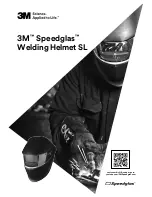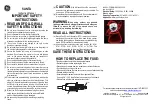
4
2.4) Die opening
Fully discharge the oil pressure from the pump, to retract the ram and release the crimped connector.
3. DIE REPLACEMENT
(Ref. to Fig. 1)
To replace dies proceed as follows:
– Upper die
(91)
Take the die off its guide by pushing the die/head release pin (18).
Insert replacement die until secured by the die/head retaining pin (15).
–
Lower die
(90)
Take the die off its guide by pushing the die/ram release pin (13).
Insert replacement die into its guide until secured by the die/ram retaining pin (12).
To facilitate this operation, an advancement of the ram (200) by 15-20 mm (0.6 - 0.8 in.) is sug-
gested.
4. MAINTENANCE
The head is robust and requires very little daily maintenance.
Compliance with the following points should help to maintain the optimum performance of the tool.
4.1) Accurate cleaning
Dust, sand and dirt are a danger for any hydraulic device.
Avoid putting the head on muddy or dusty ground. Any dirt particles may score the ram and create
oil leaks.
Every day, after use, the head must be wiped with a clean cloth, taking care to remove any residual
particles, especially around the moving parts.
4.2) Replacement of the automatic coupler
Use a spanner to unscrew the old coupler:
– Remove the obsolete coupler.
– Carefully clean the thread to remove the old sealant.
– Apply Teflon tape to the thread.
– Fit the new automatic coupler and tighten to
30 Nm (22 lbf ft)
.
The oil pressure in the head must always be completely released before disconnecting the head
from the hose.
4.3) Storage
(Ref. to Fig. 2)
When not in use, the head should be stored and transported in the plastic case, to prevent damage.
The plastic case can also accommodate 14 die sets.
Plastic case:
VAL P26
; Size 445x290x115 mm (17.52x11.42x4.5 inches); weight 1,2 kg (2.6 lbs).
ENGLISH
Summary of Contents for RHC131
Page 19: ...19 NOTE ...





































